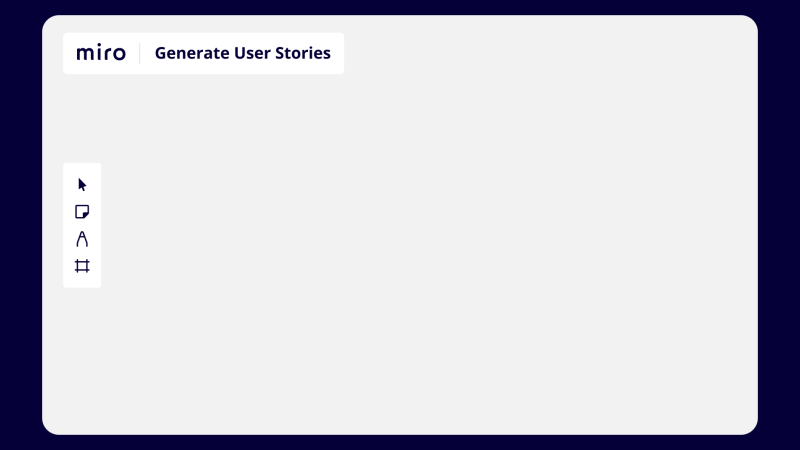Miro AI. Sinä ja tiimisi, tehostettuna.
Miro AI. Sinä ja tiimisi, tehostettuna.
Katsaus beta-versioon





Miro AI toimii useiden tauluobjektien kanssa, mukaan lukien tarralaput, kuvat, kortit, koodilohkot, sekvenssikaaviot ja ajatuskartat. Miro AI osaa myös klusteroida tarralappuja avainsanojen tai mielipiteen mukaan. Näet ohjekeskuksesta luettelon tällä hetkellä saatavilla olevista ominaisuuksista. Tiedoksesi: lisäämme uusia AI-ominaisuuksia jatkuvasti.
Beta-ohjelman avulla saamme arvokasta käyttäjäpalautetta, jonka avulla voimme parantaa Miro AI:tä palveluna. Anna palautetta ja katso, miten muut käyttävät Miro AI:tä, Miro-yhteisön kautta.
Miro AI:n kautta lähetettyjä syöttötietoja käytetään yksinomaan AI-mallin vastauksen laadintaan ja tuon vastauksen toimittamiseen takaisin käyttäjälle. Käytössä olevan AI-ominaisuuden mukaan AI-mallia isännöidään joko Mirossa tai Microsoft Azure AI:ssä. Kummassakaan tapauksessa lähetettyjä syöttötietoja ei käytetä mallin kouluttamiseen, ja sisältöä ja käyttötietoja käytetään Miron tietosuojakäytännön mukaisesti.
Ei, osallistuminen Miro AI:n beta-vaiheeseen on maksutonta. Jos tarjous tai hinnoittelu muuttuu tulevaisuudessa, muutoksista ilmoitetaan asiakkaille etukäteen.
Jos haluat kertoa toiveita AI-ominaisuuksista, keskustella Miro AI:stä muiden kanssa ja katsoa, miten muut käyttävät Miro AI:tä, käy Miro-yhteisössä.
Miro AI:n ominaisuudet toimivat parhaiten englanniksi, mutta vuorovaikutus on mahdollista myös muilla kielillä. Tulokset voivat vaihdella kielen mukaan. Miro AI:n käyttöliittymä on tällä hetkellä saatavilla englanniksi. Seuraavien viikkojen aikana se tulee saataville myös muilla kielillä, mukaan lukien (ranska, saksa, japani, espanja).